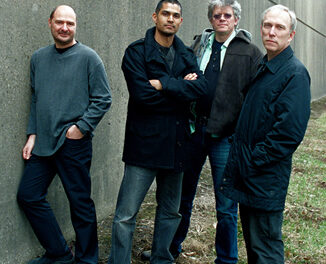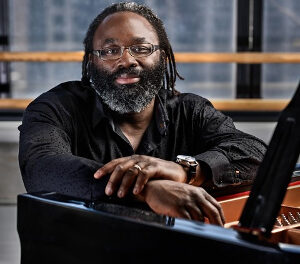There were very few empty seats in the recital hall of the College of Visual and Performing Arts of the University of North Carolina Greensboro for an eclectic pairing of two Romantic works with a unique 20th-century chamber piece, presented by the Eastern Music Festival. All of the players were drawn from the faculty orchestra and piano department.
The Violin Sonata No. 1 in G, Op. 78, by Johannes Brahms (1833-97), is sometimes nicknamed Regenlied (Rain Song). The sonata makes extensive use of the theme of the composer’s song “Regenlied,” Op. 59, No. 3, and its particular rhythm, three repeated notes in a pattern of note, pause, short note, long note which occurs throughout. It is in three movements – a lively Vivace and a mostly mellow Adagio, culminating in a Rondo presenting the Regenlied motif three times, separated by contrasting interludes, before ending quietly.
Violinist Shawn Weil spun Brahms’ melodies with a beautiful warm tone and immaculate intonation. Balance between the violin and pianist Awadagin Pratt was excellent throughout. The interweaving of both players’ lines created a mood of serenity. Here and in later movements, Pratt’s rapid keyboard figurations suggested the pitter-patter of falling rain drops. There was no lack of power from brief, intense episodes that rose above the overall tranquility of the sonata. The hushed Adagio was remarkable, from Pratt’s extended opening solo before merging with Weil’s unhurried mellow melodic line, all entwined seamlessly.
The Quintet in G minor for Oboe, Clarinet, Violin, Viola, and Double Bass, Op. 39 (1934), by Sergei Prokofiev (1891-1953), was composed to accompany a ballet about a small traveling circus. During this period, the composer was influenced by the music of France’s Les Six and Stravinsky. His reputation as an enfant terrible, is evident in the many sassy and sardonic passages over the course of the quintet’s short, evocative six movements. The influence of Stravinsky’s swaggering L’Histoire du Soldat haunts the work.
The quintet consisted of oboist Karen Birch Blundell, Anthony Taylor, switching between two clarinets, violinist Nigel Armstrong, violist Jamie Hofman, and Leonid Finkelshteyn, double bass. The latter gave brief, apt remarks about the piece. The musicians attacked the music with gusto, bringing out all the pungent possibilities (such as the tart juxtaposition of oboe and clarinet) across their respective ranges. String timbres were plumbed from the low to high while reveling in juicy dissonances. What a zesty, fun piece for listeners and players alike!
The Piano Quintet in E-flat, Op. 44, was one of the most inspired works of Robert Schumann (1810-56). Acknowledged by many scholars as the world’s first piano quintet, it has inspired other masterpieces by composers from Brahms to Shostakovich. The composer conceived it for piano being counterbalanced by the four strings. It is in four movements, a brilliant Allegro, an ominous march, a scherzo that exhaustively explores scales, and a concluding Allegro that combines the ardor of the first movement with two major fugal sections.
Pianist Pratt was joined by principal second violin Randall Weiss in the first chair with EMF concertmaster Jeffrey Multer in the second. Violist Chauncey Patterson was joined by cellist Marta Simidtchieva to round out the ensemble. Balance between the keyboard and the strings was ideal. String tone and intonation were excellent. The clarity of Pratt’s articulation was remarkable, no matter how fast the tempo. Schumann gives every string player ample opportunity to soar, and everyone pulled out all the stops with especially rich, warm contributions from Chauncey and Simidtchieva. (I have a preference for viola and cello.) Nor was there was any lack of brilliance from Weiss and Multer. This was a terrific and enterprising evening of chamber music rewarded with prolonged standing applause.
The EMF continues through July 28. See our calendar for details.












